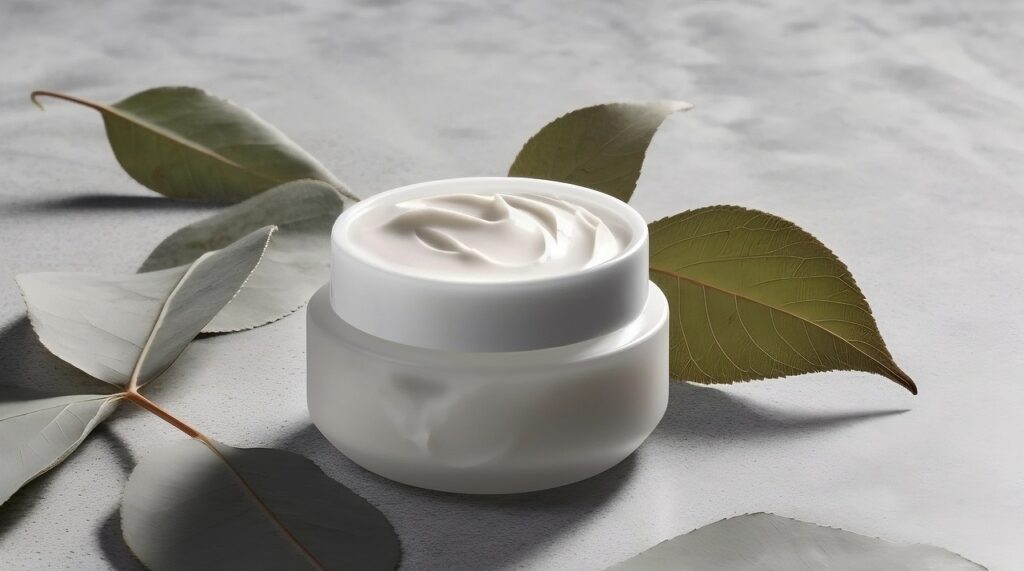Aging is a complex biological process characterised by the gradual decline of physiological functions, leading to increased morbidity and mortality. The quest for longevity has driven scientists to explore various compounds that can ameliorate age-related decline. One such compound gaining attention is sirolimus, a macrolide compound originally derived from the bacterium Streptomyces hygroscopicus. Primarily known for its immunosuppressive properties, it is now being investigated for its potential role in promoting longevity and as an anti-aging therapeutic.
How does Sirolimus work on the skin?
The skin is one of the most visibly impacted areas by the aging process. With signs such as wrinkles, loss of elasticity, and age spots becoming more prominent as we age. Sirolimus works on the skin through various mechanisms, including promoting collagen production, enhancing skin regeneration, and reducing inflammation. Collagen is a protein that plays a crucial role in maintaining skin elasticity and firmness. As we age, collagen production decreases, leading to the formation of wrinkles and sagging skin.
- Stimulate collagen synthesis by helping to improve skin structure and reduce the appearance of wrinkles.
- Promotes skin regeneration by enhancing cell turnover and increasing skin cell renewal. This process helps to repair and rejuvenate the skin, leading to a more youthful and radiant complexion.
- Anti Inflammatory properties Sirolimus helps reduce skin redness, irritation, and other inflammatory conditions. By modulating inflammatory pathways, sirolimus can protect the skin from environmental stressors and promote a healthy skin barrier.
Overall, sirolimus works on the skin by promoting collagen production, enhancing skin regeneration, and reducing inflammation. Therefore leading to improved skin health and a more youthful appearance.
Mechanism of Action
Sirolimus works by inhibiting the mechanistic target of rapamycin (mTOR), which is a central regulator of cellular metabolism, growth, proliferation, and survival. mTOR functions as part of two complexes: mTORC1 and mTORC2. mTORC1 regulates anabolic processes, including protein synthesis, and is activated by nutrients, growth factors, and insulin. Conversely, mTORC2 is involved in cell survival and metabolism.
The inhibition of mTORC1 by sirolimus has been shown to mimic caloric restriction, a well-established intervention that extends lifespan in various model organisms. This effect is believed to stem from enhanced autophagy, decreased inflammation, and improved metabolic regulation, all of which are vital for the maintenance of cellular homeostasis.
Research Findings
- Studies in Animal Models : In studies involving mice, chronic administration of sirolimus has demonstrated a significant increase in both lifespan and healthspan, which refers to the period of life spent in good health. A notable study published in 2014 by Harrison et al. in Nature demonstrated that sirolimus extended the lifespan of genetically heterogeneous mice, linking mTOR signaling with aging.
- Effects on Human Cells : Research has also been conducted on human cell lines indicating that sirolimus can enhance autophagic activity and potentially rejuvenate aged cells. A study published in Aging Cell found that treatment with sirolimus led to improved muscle regeneration in mice, suggesting potential applications for older adults.
- Clinical Observations : While extensive studies in humans are still ongoing, clinical data hint at the beneficial effects of sirolimus in older populations. Observations note improved metabolic profiles in elderly patients undergoing sirolimus treatment for other medical reasons, though more systematic studies are needed to establish concrete evidence for anti-aging benefits.
Potential Side Effects and Considerations
As with any therapeutic agent, the use of sirolimus is not without risks. Common side effects include increased risk of infections due to immunosuppression, metabolic changes such as hyperlipidemia, and potential kidney toxicity. Long-term safety and efficacy trials are essential to fully understand the implications of sirolimus use as an anti-aging treatment.
Commonly Asked Questions about Sirolimus and Anti-Aging
1. Is sirolimus safe for use in anti-aging treatments?
Sirolimus has been extensively studied for its safety and efficacy in various medical settings, including anti-aging. When used under the supervision of a healthcare provider and in appropriate concentrations, sirolimus has been shown to be safe for topical use on the skin. However, it is important to consult with a healthcare provider or dermatologist before starting any new anti-aging treatment, including sirolimus-based therapies.
2. How long does it take to see results from sirolimus-based anti-aging treatments?
The timeline for seeing results from sirolimus-based anti-aging treatments may vary depending on individual skin type, concerns, and treatment regimen. Some individuals may experience improvements in skin texture, elasticity, and overall appearance within a few weeks of starting sirolimus therapy. However, it is essential to have realistic expectations and allow time for the skin to regenerate and respond to the treatment.
3. Are there any side effects associated with sirolimus-based anti-aging treatments?
While sirolimus is generally well-tolerated when used topically for anti-aging purposes. Some individuals may experience mild side effects such as skin irritation, redness, or dryness. These side effects are usually temporary and can be minimised by following the recommended treatment protocol and using suitable skincare products. If you experience any severe or persistent side effects, it is important to discontinue the treatment and consult with a healthcare provider.
In conclusion, sirolimus offers promising benefits for anti-aging, including improving skin health, promoting collagen production, and reducing inflammation. By understanding how sirolimus works on the skin and the role of compounding pharmacies in delivering customised treatments, individuals can explore innovative anti-aging solutions tailored to their unique needs. Consult with a healthcare provider or compounding pharmacist to learn more about sirolimus-based anti-aging therapies and discover personalised skincare options for achieving a more youthful and radiant complexion. Remember to prioritise your skin health and consult with skincare professionals to determine the best anti-aging regimen for your individual needs. With the potential benefits of sirolimus and the personalised care provided by compounding pharmacies, you can embark on a journey towards healthier, more youthful-looking skin.
Can you buy Rapamycin in Australia?
Compounding pharmacies play a crucial role in providing personalised and customised treatments for individuals seeking anti-aging solutions. When it comes to sirolimus-based therapies, compounding pharmacies can formulate unique formulations tailored to the individual’s specific skin type, concerns, and goals.
Compounding pharmacists can create sirolimus-based creams, serums, or gels that are customised to meet the needs of each patient. By adjusting the concentration of sirolimus and incorporating other active ingredients, compounding pharmacies can create formulations that target specific skin issues, such as wrinkles, fine lines, or hyperpigmentation.
In addition to personalised formulations, compounding pharmacies can also adjust the delivery method of sirolimus to enhance its effectiveness and ensure optimal skin penetration. For example, compounding pharmacies may use advanced delivery systems, such as liposomes or nanoparticles, to improve the absorption of sirolimus into the skin and maximise its anti-aging benefits.
Furthermore, compounding pharmacies can work closely with healthcare providers and patients to develop individualised treatment plans that address specific skin concerns and desired outcomes. By collaborating with compounding pharmacists, individuals can receive tailored sirolimus-based anti-aging treatments that are safe, effective, and customised to their unique needs.
By offering customised compounded therapies and personalised advice. We aim to help you achieve a brighter, more radiant complexion. Contact us today to learn more about our services and how we can assist you in achieving your skincare goals.
References
- Harrison, D. E., Strong, R., Sharp, Z. D., et al. (2014). “Acarbose, an alpha-glucosidase inhibitor, extends life span of genetically heterogeneous mice.” Nature , 505(7481), 382-386.
- Anisimov, V. N., et al. (2011). “Prevention of aging in rats treated with diepoxybutane and rapamycin.” Aging Cell , 10(2), 335-339.
- Zhang, G., et al. (2014). “Regulation of cellular senescence by rapamycin.” Nature , 520(7549), 132-137.
- Torgersen, M. L., et al. (2013). “The role of the mTOR pathway in stress-induced cellular senescence.” Cell Reports , 3(3), 1110-1123.
- Lopez-Otin, C., et al. (2013). “Evolving concepts in aging and aging research.” Cell , 153(6), 1194-1217.

Lane Khin, the compounding pharmacist of My Skin Pharmacy, brings a wealth of knowledge from the worlds of pharmacy and dermatology to the table. With degrees in Pharmacy and Applied Science from QUT, Lane combines a deep understanding of compounding and skincare with a friendly, accessible approach. Through My Skin Magazine, Lane shares her expertise, offering readers practical advice and insights into personalised skincare solutions. Lane has a real passion for helping others achieve their best skin.


